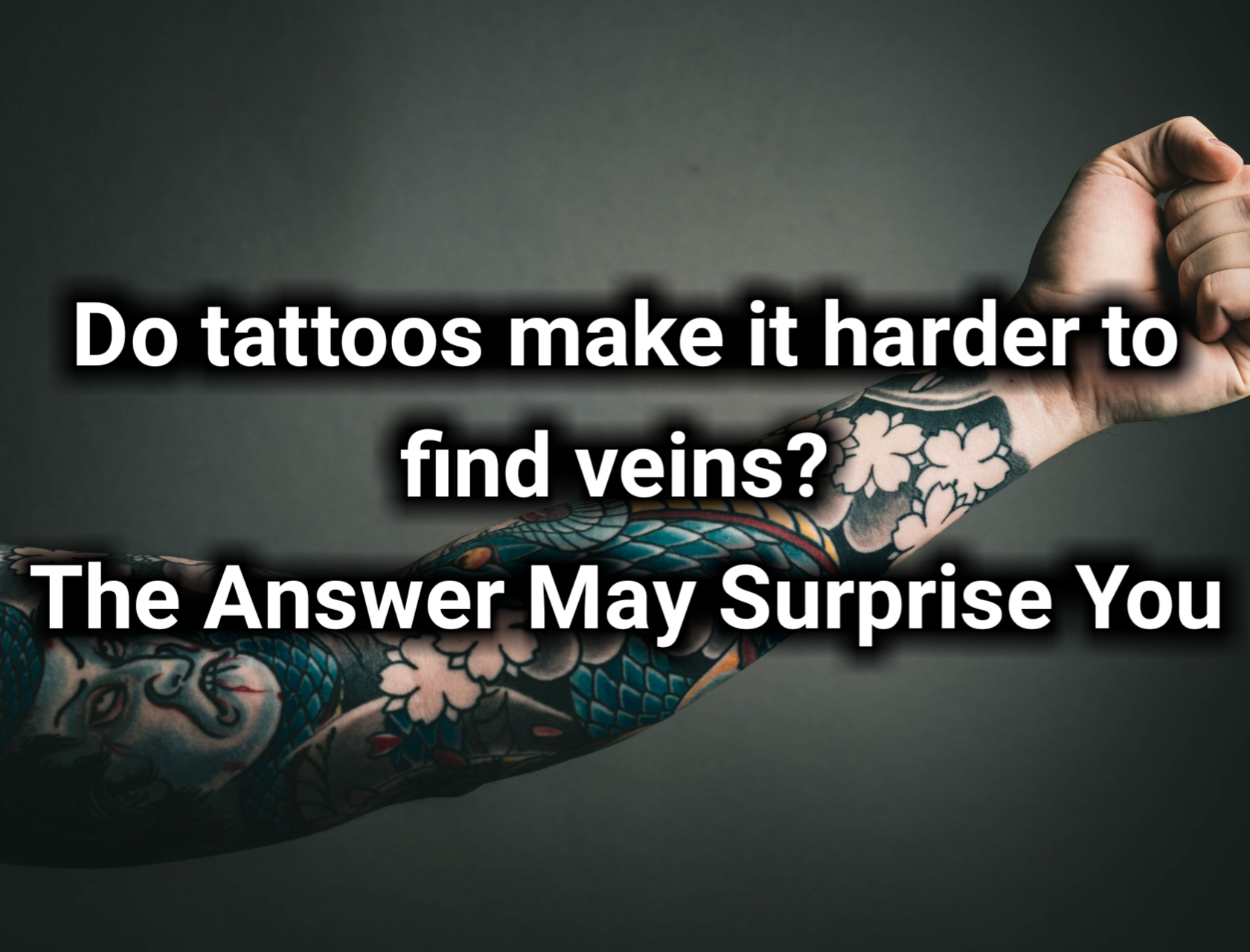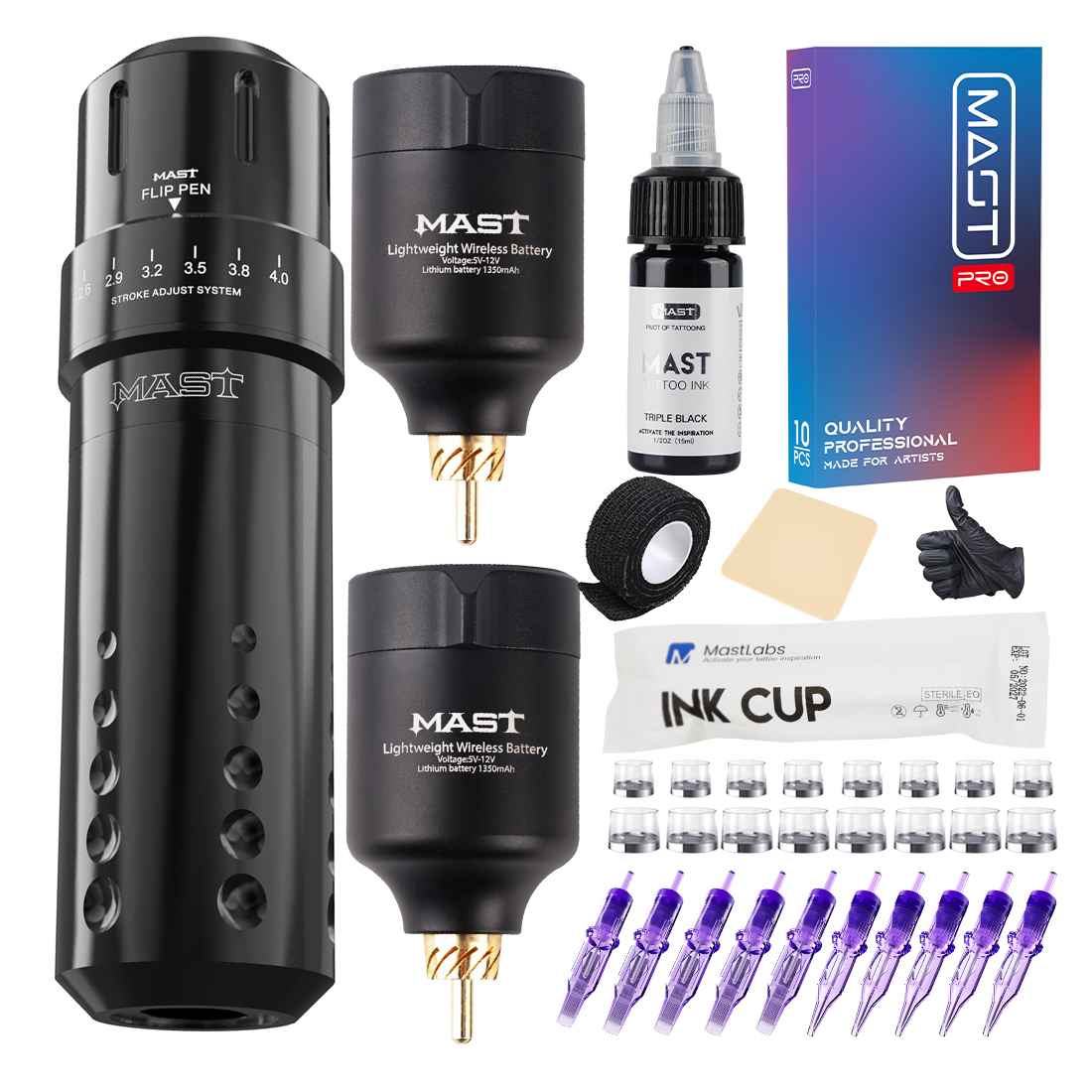Tattoos have become increasingly popular forms of self-expression, with millions of individuals worldwide adorning their bodies with intricate ink designs.
However, one question often arises in medical settings: Do tattoos make it harder to find veins?
In this article, we will explore the impact of tattoos on vein visibility, potential challenges for healthcare professionals, and techniques used to overcome these obstacles.
Understanding tattoos and their impact on veins
Tattoos have a long history, dating back thousands of years. They involve injecting colored pigments into the dermis layer of the skin, resulting in permanent body art.
While tattoos are generally safe and aesthetically appealing, their presence can pose challenges when it comes to identifying veins for medical procedures such as blood draws or intravenous (IV) injections.
To comprehend the impact of tattoos on vein visibility, it’s crucial to understand how tattoos are created.
The tattoo needle penetrates the epidermis and deposits ink into the dermis layer, where the pigments become permanently embedded.
As a result, the ink can alter the appearance of the skin and potentially obscure veins located beneath the tattooed area.
Tattoo Ink and its Effect on vein visibility
Tattoo ink can vary in composition, but most formulations consist of organic and inorganic pigments suspended in a carrier solution.
The pigments are responsible for the colors and design of the tattoo.
However, certain colors, particularly darker ones like black or deep blue, can absorb or scatter light, making veins harder to visualize through the tattooed skin.
Also Read: Can You Tattoo over Veins on Hand?
Potential challenges in vein identification
What are some of the challenges tattoos can pose in vein identification? Let’s check them out.
1. Scarred or damaged skin
Tattoos are created by repeatedly puncturing the skin with a needle, causing small wounds that heal to form the tattoo.
This process can lead to scar tissue formation, which further obscures veins and makes their identification more challenging.
2. Aging and changes in skin elasticity
As we age, our skin loses elasticity, becoming thinner and more prone to sagging.
This natural aging process can cause veins to become less prominent, making them even harder to locate beneath tattoos.
3. Vein location and depth
Vein visibility can also be influenced by the location and depth of the veins.
Some areas of the body, such as the inner forearm or the antecubital fossa (the crease of the elbow), are commonly tattooed, and veins in these regions may be obscured by the presence of ink.
Also Read: Can You Tattoo Over Bulging Veins?
Techniques for vein identification with tattoos
Despite the challenges posed by tattoos, medical professionals have developed various techniques to aid in vein identification.
1. Transillumination
This technique involves shining a bright light through the skin, allowing healthcare professionals to visualize the shadows created by veins.
By using transillumination devices, veins can be identified even beneath tattooed skin.
See the best transillumination devices on the planet
2. Ultrasound technology
Ultrasound imaging is a valuable tool in locating veins, regardless of whether tattoos are present.
It uses sound waves to create real-time images of the veins, enabling healthcare professionals to accurately locate them, even in tattooed areas.
3. Near-infrared light devices
Near-infrared light devices utilize light at specific wavelengths that can penetrate the skin and be absorbed by hemoglobin in the blood.
By detecting the reflected light, these devices can help identify veins beneath tattoos.
Check out these Near-infrared light devices
Oh and here’s a great article comparing these three techniques.
Importance of communication and skilled healthcare professionals
While technological advancements assist in identifying veins, effective communication between patients and healthcare professionals is crucial.
Patients should inform the medical staff about the presence of tattoos to ensure proper vein identification.
Skilled healthcare professionals with experience in dealing with tattooed patients can employ a combination of techniques to successfully locate veins and minimize discomfort or potential complications during medical procedures.
Also Read: Can a Tattoo Needle Hit a Vein?
Conclusion
In conclusion, tattoos can present challenges when it comes to finding veins for medical procedures.
The ink, scar tissue, changes in skin elasticity, and vein location can all contribute to reduced vein visibility.
However, through the use of transillumination, ultrasound technology, and near-infrared light devices, healthcare professionals can overcome these obstacles and accurately identify veins beneath tattoos.
Open communication between patients and medical staff is essential for successful vein identification and optimal patient care.
That answers the question, “Do tattoos make it harder to find veins?”
Thanks.
Also Read: What Happens if a Tattoo Needle Hits a Vein?
FAQs
Are all tattoos equally challenging for vein identification?
The visibility of veins beneath tattoos can vary depending on factors such as the color, density, and location of the tattoo.
Darker colors and heavily inked areas may present more difficulty.
Can tattoo removal improve vein visibility?
Tattoo removal can help enhance vein visibility by eliminating the ink that obscures the veins.
However, it’s important to consult with a dermatologist or tattoo removal specialist before undergoing any procedures.
Do tattoos affect the accuracy of blood pressure measurements?
In general, tattoos do not significantly impact blood pressure measurements.
Healthcare professionals can choose alternative sites for accurate readings, such as the other arm or the thigh.
Can healthcare professionals refuse treatment due to tattoos?
Healthcare professionals are committed to providing care to all patients, regardless of their tattoos.
Refusing treatment solely based on the presence of tattoos would be considered unethical and goes against professional standards.
Are there any alternative methods for vein identification without the use of technology?
In addition to technological aids, healthcare professionals can rely on their palpation skills to locate veins.
By gently feeling the skin’s surface, they can identify the position and depth of veins, even in tattooed areas.






